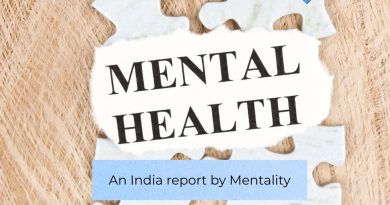Suicide Prevention: Is India’s Data Enough to Tackle the Complex Issue?
‘Farmers commit suicide due to debt and crop failure’.
‘Housewives commit suicide due to domestic violence’.
‘Young students commit suicide due to failure in exams’.
You will have seen these phrases, which commonly appear in media reports and social media discussions on suicide in India. More often than not, any debate or discussion tends to revolve around a single cause depending upon a specific demographic (as highlighted above).
This can probably be linked to the official data on suicides collated by the National Crime Records Bureau (NCRB), which classifies reasons of suicide into stand-alone categories of family problems, unemployment, debt, illness and others. However, there are critical issues with this data, which is a hindrance towards the standard process of using data to design policy interventions.
As I reported in IndiaSpend: “When it comes to data regarding suicides and the reasons for it, NCRB figures cannot be trusted at all,” says Vikram Patel, a psychiatrist and Professor at Harvard Medical School with extensive experience on suicide. “Given the complexity of suicides, just listing single reasons for suicide is too simplistic. Further, the police aren’t trained to handle suicide cases and investigations and reporting is done randomly.”
ALSO READ: Is India ready to tackle a mental health crisis?
So what does the NCRB data say?
In 2015, 27.6% of suicides in India were attributed to family problems, followed by illness (15.8%) and marriage (4.8%), as per NCRB data. About 12% of suicides are not listed under any causes.
|
Causes |
Percentage of suicides |
|
Family Problems |
27.6% |
|
Illness |
15.8% |
|
Marriage related issues |
4.8% |
|
Love affairs |
3.3% |
|
Bankruptcy |
3.3% |
|
Drug abuse/addiction |
2.7% |
|
Unemployment |
2% |
|
Exam failure |
2% |
|
Other causes |
26.2% |
|
Causes not known |
12.1% |
Source: National Crime Records Bureau
The NCRB has started publishing data separately for farm suicides since 2014.
|
Causes |
Percentage of farm suicides in 2015 |
|
Bankruptcy or indebtedness |
38.7% |
|
Farming related issues |
19.5% |
|
Family problems |
11.7% |
|
Illness |
10.5% |
|
Drug abuse/alcoholic addition |
4.1% |
|
Marriage related issues |
2% |
|
Poverty |
1.1% |
|
Property dispute |
1.1% |
Source: National Crime Records Bureau
WHERE TO GET HELP: CONTACTS AND HELPLINES (INDIA)
CHALLENGES OF NCRB DATA
Experts contend that there are two major challenges with NCRB data.
1. Underestimating the number of suicides
2. Portraying a simplistic picture of suicides
“There is now a general consensus that the NCRB data on suicides is an underestimate. The million death study reported 30% more suicides than NCRB, while the WHO estimated nearly 100% more suicides than NCRB data,” Dr Soumitra Pathare, a psychiatrist and co-ordinator, Centre for Mental Health Law and Policy, tells The Health Collective.”
Dr Rahul Shidaye, a clinical psychiatrist and research scientist at the Public Health Foundation of India (PHFI), agrees. He spoke to The Health Collective in detail on this issue.
“In several cases, if a person has had alcohol a few minutes or hours before committing suicide, then alcohol is attributed as a cause of death, which is misleading,” Dr Shidaye tells us. “The NCRB collects data at a higher level and attributes single causes for suicides. However, it must be remembered that suicide has multiple cause and in epidemiological research, it is difficult to prove causation.”
THE NEED FOR MORE RESEARCH
It must be noted that suicide is not a sporadic act or incident, rather, it’s a complex process which is caused by the interaction of multiple factors.
Dr Pathare explains “Suicides are usually to due to multi-factorial reasons with many pre-disposing causes and single/many precipitating causes. Additionally, causes of suicides are different for different groups, in different regions and at different points in time. So, it is an ongoing challenge to characterise the causes.”
Dr Shidaye told The Health Collective HC that to establish causal pathways leading to suicides, there is a need for psychological autopsies must be conducted. This involves collecting all available information on the deceased via structured interviews of family members, relatives or friends, and attending healthcare personnel. In addition, information is collected from available health care and psychiatric records, other pertinent documents, and forensic examination.
For instance, a psychological autopsy conducted in Bangalore in 2004 found that the cumulative and repetitive interaction of several factors — such as family, marriage, education, occupation, general health, mental health — and absence of protective factors contribute significantly for suicides. This is at odds with the NCRB data which attributes only a single reason for suicide.

ALSO READ: Ask the Experts: Do We Need a New Approach to Suicide Prevention
As I discussed in this earlier column for The Health Collective, a key debate in mental health is the over-emphasis on the bio-medical approach of treatment, which discards social determinants of mental health. For instance, this 2017 study found that childhood sexual abuse is a strong predictor of suicidal ideation among adults.
However, a critical concern arises that is conducting autopsies feasible in a large country like India. In relation to this, Dr Shidaye said “Even if not all districts or regions, it must be conducted in regions prone to high suicides. For instance, psychological autopsies may help find if the suicides are probably copycat suicides due to reporting.”
ALSO READ: Media watch: Portrayal of Mental Illness and Suicide
The lack of sufficient data and simplistic causes of suicides can lead to flawed policies.
“This simplistic attribution of causes in the case of farm suicides, leads to reactionary policies rather than pre-emptive ones, writes Dr. Shamika Ravi, a senior Brookings India Fellow and member of the Prime Minister’s Economic Advisory Council. “Suicides are characterised by a prior history of difficulties and, in most cases, mental illness that renders the person vulnerable to suicidal behaviour, for which we need to have a deeper understanding of factors that trigger and contribute to suicides among different demographic categories”.
Dr. Ravi’s arguments are substantiated by a study conducted in Vidarbha, Maharashtra, a region infamous for suicides. A 18-month suicide prevention programme in Vidarbha reduced the prevalence of depression and suicidal tendencies by providing psychological first aid to mentally ill persons through community health workers, as reported by Scroll earlier this year.
The study, published in The Lancet Psychiatry, found that the prevalence of depression fell by 22% in the one year and prevalence of suicidal thoughts fell by 51% due to the program.
THE WAY FORWARD
Going forward, there is a clear need for psychological autopsies in regions with higher incidence of suicides. The research needs to be complemented with innovative mental health interventions as in the case of Vidarbha, Maharashtra.
In March 2017, India decriminalised suicide, with the passage of the Mental Healthcare Bill. This was hailed as a huge step forward for mental health in India… however, the lack of sufficient data needs to be addressed if mental illnesses are to be appropriately tackled through policy interventions.
Disclaimer: Views expressed are personal. Material on the Health Collective cannot substitute for expert advice from a trained professional. If you or anyone you know has ever expressed a wish to end it all, or feels suicidal, please reach out for help immediately to a trained counsellor or therapist. Contacts and helplines.




